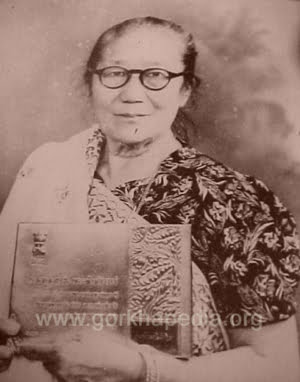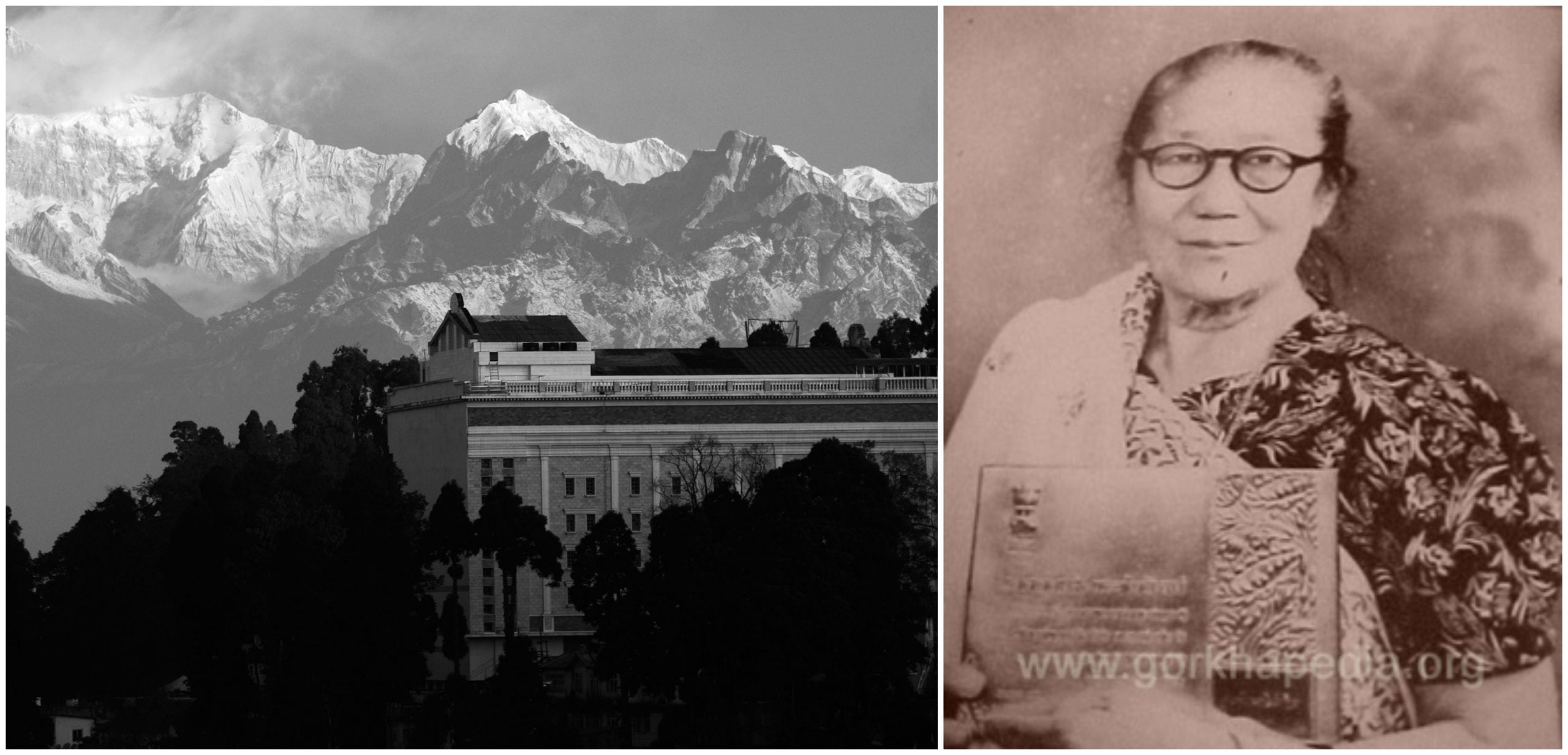A cauldron brimming with a myriad of elements, Darjeeling is home to people from multiple ethnicities, speaking many tongues and practising many faiths. The fuzzy nature of the northern frontiers which led to the settlement of people from neighbouring nation-states such as Nepal, Tibet, and Bhutan, resulted in the formation of this alchemical wonder – the Queen of the Hills. However, battling the modern crisis of identity, which asks one to conform to the ‘nation-state’, while bearing some cultural baggage, these individuals feel unnoticed or ignored even if not devalued when it comes to their historiographical narrative. Especially the woman. As she treads on this fine wire of balancing one’s transnational cultural identity and the demands of citizenship, her hands try to steady the domestic and the public.
While the British, single-mindedly, cast upon the ‘Gorkhas’ (though not all people of Darjeeling would like to be shoe-boxed under that label) an Orientalist gaze of being a simple-minded “martial race”, they weren’t quite wrong. As history shows, many men from this northern terrain have fought valiantly, especially for the independence of the nation-state they were desperate to belong to. But it never quite acknowledges the bravery of the martial hill women, who tried to make giant gestures not only for the freedom of the country but also for womankind.
Sabitri Devi

Helen Lepcha alias Sabitri Devi (born 1902) was one of the most prominent freedom fighters from the hills of Darjeeling. Originally a resident of Kurseong, Dist. Darjeeling, she traced her lineage to Sikkim, which honours her as their very own. Around 1917, when a Bengali man has come to propagate Gandhi’s Charkha Movement, Helen, a fresh school-dropout, resonated deeply with his speech. She was so inspired that she took off to Calcutta in 1918, to get enrolled in the Charkha school of the granddaughter of Pt. Ishwar Chandra Vidyasagar. A skilled learner, she soon got the opportunity to be a representative of the school in the National level Khadi and Charkha Exhibition in Muzzafarpur in Bihar.
As history shows, many men from this northern terrain have fought valiantly, especially for the independence of the nation-state they were desperate to belong to. But it never quite acknowledges the bravery of the martial hill women, who tried to make giant gestures not only for the freedom of the country but also for womankind.
When volunteering for the Bihar floods in 1920, Helen was summoned by Gandhi, who had heard about her selfless goodwill towards the unfortunate, to Safidat’s house. Impressed by her dedication to the cause, Gandhi invited her to Sabarmati Ashram, and it was there that Sabitri Devi was born. After her rechristening, she acted as a Congress leader looking after certain parts of Bihar and Uttar Pradesh like Patna, Danapur, Bakipur, Muzzafarpur, and Jharia coalfields and gained immense popularity among the netizens. The British were wary about this, as they staled her every move. With an anti-British stance and a nationalist spirit, she attended almost every event which tried to topple Britannia’s hold on India, and in this process, she is said to have come in close contact with eminent political personalities such as Sarojini Naidu, Jawaharlal Nehru, Moraji Desai and the like.
With the tricolour in hand, Sabitri had led a rally of labourers of Jharia in 1921 as a part of the Non-Cooperation Movement. She carried this spirit back home when having to tend to her mother, as she gathered volunteers to start a campaign against foreign goods in Siliguri. As bonfires were lit with these goods as their fodder, despite the section 144 imposed, the nationalistic fire in their hearts burned brighter leading to rallies, till they were taken into custody. An anti-government case was opened against her, leading to 3-month imprisonment and a further house arrest, till she met with Gandhi in 1925. Rumour has it, she aided Subash Chandra Bose to escape from India. With many titles and awards given to her during her lifetime, Sabitri Devi was revered for the brave woman she was.
Putalimaya Devi Poddar
The eldest daughter of Manbahadur Tamang, Putalimaya Devi Poddar (born 1920) was another daughter of the hills who participated in the nationalist struggle. When 14-15, she came across a man, Saryu Prasad Poddar, adorned with Khaddar clothing in Kurseong. With feelings of patriotism stirring in her soul, she met Saryu Prasad and expressed her desire to participate in the freedom struggle to be declined and asked to return to school. Even as a schoolgirl, she actively tried to do her part by constantly keeping in touch with the Congressmen and collecting information about movements around the country.
Realising the need for women to equally be part of the political arena, she made them messengers of patriotism to inspire the domestic sphere they inhabited, infecting the entire community with fervent bouts of nationalism. With this objective, she formed a Mahila Samiti/Women’s organisation that produced Khadi clothes, which served as symbols of the movement.
When in 1936 the Congress Branch was finally established in Kurseong with the help of native patriots, among whom was the above mentioned Sabitri Devi, Putalimaya finally became a member of the party. She further started a Harijan Samaj (Committee) in Kurseong, inspiring them to take an education and making this possible by starting a school to do so. Realising the need for women to equally be part of the political arena, she made them messengers of patriotism to inspire the domestic sphere they inhabited, infecting the entire community with fervent bouts of nationalism. With this objective, she formed a Mahila Samiti/Women’s organisation that produced Khadi clothes, which served as symbols of the movement.
Also read: What Does It Mean To Be A Tibetan Outside Tibet?
As the common folk increasingly engaged themselves in the support of these organisations, the members started openly preaching about nationalist sentiments, often keeping a picture of Gandhi as a shrine. Having defied a warning from the police earlier, Putalimaya in 1942 organised a massive procession with other Congress members, to be eventually arrested. Although her health deteriorated, she went against her parent’s wishes to continue with her active role in the movement. Even after independence, she continued to work as a social activist and a member of the congress party. Popularly called “Mataji‟, she was respected by all, especially the downtrodden to whom she dedicated her very own life. She rightfully deserved the titles, honours and awards bestowed upon her.
Fierce Women Of The Hills
Despite their bold and flamboyant personalities, they didn’t join the nationalist struggle unscathed and smoothly. As women of a conservative society, they had to fight and overcome a dual system of oppression – one was, of course, the colonial rule, and the other was the social control upon the fairer sex situated upon cultural and casteist hegemony. Uneducated, and forced into same-caste child marriage, women had no agency even in the domestic sphere. Yet, these two phenomenal women managed to tackle these obstacles cultivating an awareness that led them to question their social tethering and further curate a perspective on wider socio-political problems.
Staying true to her cause, Putalimaya is said to go against her parents’ wishes of what a woman should do, further breaking constraints that restrict the growth of a woman as a political being. Sabitri Devi is said to have been married to a Muslim man, Ishan Ahmed, with whom she encoded messages for Netaji in the bread manufactured by his bakery. Putalimaya was married to Surya Prasad Poddar, against which there was a loud outcry from her parents and the public, as she had decided to marry a Bihari.
This “audacity” was dramatised by a mob surrounding the wedding venue (a library) with Khukuris (Nepali dagger) in their hands. Despite the stringent rules about marriage, both the women decided to fight against the norm and shed their bondages to a society which asked them to behave, marry, and menstruate in a certain way.
There may have been many women who silently contributed to the freedom struggle, but, alas, we may never know. This historiographical invisibility of women is distressing, as women of the present have a blank canvas of understanding about their past achievements and their future possibilities. This marginality of participation becomes almost nil as mainstream history textbooks only acknowledge the efforts of the privileged women, and ignore contributions of some due to the remoteness of their ethno-geography. While these women never tried to make history just to be recorded in the books, one must think about the women who have the same dream, yet must chart the waters without a map.
Also read: Gorkhaland Movement: Have The Gorkhas Been Inclusive Of Their Minorities?
References:
- Himalaya
- IOSR Journals
- IJIFR
- Introduction of the Creation of Patriarchy by Gerda Lerner
Featured Image Source: Ixigo
About the author(s)
Philosophy major with divergent interests, all unified by the need to share her voice and find beauty in the smallest of things.





putalimaya is a legend. I love the writer.